Talvik |
||||||||||||||||||||||||||||
 |
 |
|||||||||||||||||||||||||||
Knitted jumper with round yoke in DROPS Alpaca. Piece is knitted top down with Nordic pattern. Size: S - XXXL Knitted hat with Nordic pattern and pompom in DROPS Alpaca.
DROPS 197-10 |
||||||||||||||||||||||||||||
|
EXPLANATION FOR THE PATTERN: ---------------------------------------------------------- PATTERN: Jumper: See diagrams A.1 and A.2. Hat: See diagram A.3. Work all stitches in stocking stitch. DECREASE/INCREASE TIP (evenly): To calculate how to decrease/increase evenly, use the total number of stitches on round (e.g. 124 stitches) and divide stitches by number of decreased/increases to be done (e.g. 20) = 6.2. In this example decrease by knitting approx. every 5th and 6th stitch together. When increasing make a yarn over after approx. every 6th stitch. On next round work yarn over twisted to avoid hole. KNITTING TIP: To avoid the knitting tension to tighten when working pattern, it is important not to tighten the strands on back side of piece. Switch to a higher needle number when working pattern if the pattern is somewhat tight. INCREASE TIP (applies to sides of body): Work until 2 stitches remain before marker thread, make 1 yarn over, knit 4 (marker thread is in the middle of these stitches), make 1 yarn over (= 2 stitches increased). On next round knit yarn over twisted to avoid holes. Then work the new stitches in stocking stitch. DECREASE TIP-1 (applies to mid under sleeve): Decrease 1 stitch on each side of marker thread as follows: Work until 4 stitches remain before marker and knit 2 together, knit 4 (marker thread is between these 4 stitches), slip 1 stitch knitwise, knit 1, pass slipped stitch over stitch worked (= 2 stitches decreased). DECREASE TIP-2 (applies to hat): Work until 2 stitches remain before marker thread, knit the next 2 stitches together (= 1 stitch decreased). Repeat at each of the remaining marker threads. ---------------------------------------------------------- START THE PIECE HERE: ---------------------------------------------------------- JUMPER - SHORT OVERVIEW OF THE PIECE: Worked in the round on circular needle from mid back, work top down. Work sleeves in the round on double pointed needles/a short circular needle. NECK EDGE: Cast on 124-128-136-140-148-152 stitches on a short circular needle size 2.5 mm with off white. Knit 1 round. Now work rib (= knit 2/purl 2) for 3 cm. Knit 1 round while decreasing 20-20-20-20-20-20 stitches evenly - read DECREASE/INCREASE TIP = 104-108-116-120-128-132 stitches. Knit 1 round. YOKE: Switch to circular needle size 3 mm. Read KNITTING TIP and REMEMBER THE KNITTING TENSION! Now work pattern A.1 (= 4 stitches) 26-27-29-30-32-33 times in total on round. On round with black star in A.1 increase 20-24-20-24-32-36 stitches evenly – remember DECREASE/INCREASE TIP = 228-240-252-264-288-300 stitches (including the 4 stitches increased in every repetition of A.1. Now work pattern A.2 in the round, AT THE SAME TIME on round with arrow increase evenly as follows: ARROW-1: Increase 24-36-36-36-36-36 stitches = 252-276-288-300-324-336 stitches. ARROW-2: Increase 24-24-36-36-36-36 stitches = 276-300-324-336-360-372 stitches. ARROW-3: Increase 24-24-24-36-36-36 stitches = 300-324-348-372-396-408 stitches. ARROW-4: Increase 12-24-24-24-24-24 stitches = 312-348-372-396-420-432 stitches. When entire A.2 has been worked vertically, piece measures 20 cm from cast-on edge. Now work piece in light beige and stocking stitch, AT THE SAME TIME on first round increase 14-10-14-17-20-14 stitches evenly. Increase like this every 4th-4th-5th-6th-8th-8th round 1-2-2-2-2-4 times in total = 326-368-400-430-460-488 stitches. Then work until piece measures 22-24-26-28-30-32 cm from cast-on edge. Work next round as follows: Knit 49-54-58-64-70-75 (= half back piece), slip the next 64-75-83-86-90-93 stitches on a stitch holder for sleeve, cast on 10-10-12-12-14-16 new stitches on needle (= in the side under sleeve), knit 99-109-117-129-140-151 (= front piece), slip the next 64-75-83-86-90-93 stitches on a stitch holder for sleeve, cast on 10-10-12-12-14-16 new stitches on needle (= in the side under sleeve) and knit the remaining 50-55-59-65-70-76 stitches (= half back piece). Finish body and sleeves separately. NOW MEASURE PIECE FROM HERE! BODY: = 218-238-258-282-308-334 stitches. Insert 1 marker thread in the middle of the 10-10-12-12-14-16 new stitches that were cast on under sleeves. Move the marker threads upwards when working. Continue in the round with light beige and stocking stitch. When piece measures 4 cm from division, increase 1 stitch on each side of both marker threads - read INCREASE TIP (= 4 stitches increased). Increase like this every 8th round 9 times in total = 254-274-294-318-344-370 stitches. Continue like this until piece measures 27 cm. Knit 1 round while increasing 82-86-94-106-116-122 stitches evenly - remember DECREASE/INCREASE TIP = 336-360-388-424-460-492 stitches. Switch to circular needle size 2.5 mm and work rib = knit 2/purl 2 for 4 cm. Cast off with knit over knit and purl over purl but to avoid at tight cast-off edge make 1 yarn over after every 4th stitch (cast off yarn overs as stitches). Jumper measures approx. 56-58-60-62-64-66 cm from shoulder and down. SLEEVE: Slip the 64-75-83-86-90-93 stitches from stitch holder in one side of piece double pointed needles/a short circular needle size 3 mm and pick in addition up 1 stitch in each of the 10-10-12-12-14-16 new stitches cast on under sleeve = 74-85-95-98-104-109 stitches. Insert 1 marker thread in the middle of the 10-10-12-12-14-16 stitches under sleeve. Begin round here and work in stocking stitch in the round. When sleeve measures 4 cm from division, decrease 2 stitches mid under sleeve - read DECREASE TIP-1! Decrease like this every 10th-8th-6th-6th-6th-4th round 7-3-9-5-1-18 times and every 8th-6th-4th-4th-4th-2nd round 4-12-10-14-20-4 times = 52-55-57-60-62-65 stitches. When sleeve measures 38-36-35-33-31-30 cm from division (shorter measurements in the larger sizes because of longer yoke), knit 1 round while increasing 16-17-19-20-18-19 stitches evenly - remember DECREASE/INCREASE TIP = 68-72-76-80-80-84 stitches. Switch to double pointed needles size 2.5 mm and work rib in the round = knit 2/purl 2. When rib measures 5 cm, cast off with knit over knit and purl over purl but to avoid a tight cast-off edge make 1 yarn over after every 4th stitch (cast off yarn overs as regular stitches). Sleeve measures approx. 43-41-40-38-36-35 cm from division. Work the other sleeve the same way. ---------------------------------------------------------- HAT - SHORT OVERVIEW OF THE GARMENT: Work in the round on a short circular needle. Switch to double pointed needles when needed. HAT: Cast on 120-132 stitches on circular needle size 2.5 mm with off white. Knit 1 round. Then work rib (= knit 2/purl 2) for 2 cm. Switch to circular needle size 3 mm and work pattern A.3 (= 12 stitches) 10-11 times in total on round. REMEMBER THE KNITTING TENSION! When A.3 has been worked vertically, piece measures approx. 14-14 cm. Then work in stocking stitch in the round with light beige. When piece measures 15-15 cm, insert 6 marker threads in the piece, 20-22 stitches apart each marker thread. On next round, decrease 1 stitch before every marker thread – read DECREASE TIP-2. Decrease like this every other round 14-17 times in total = 36-30 stitches. Knit 2 and 2 stitches together until there are 9-8 stitches on needle. Cut the yarn and pull it through the remaining stitches, tighten tog and fasten. Hat measures approx. 24-26 cm. Make a pompom approx. 6 cm in diameter. Use 3 strand light camel, 1 strand off white and 1 strand light beige to make pompom and fasten at the top of hat. |
||||||||||||||||||||||||||||
Diagram explanations |
||||||||||||||||||||||||||||
|
||||||||||||||||||||||||||||
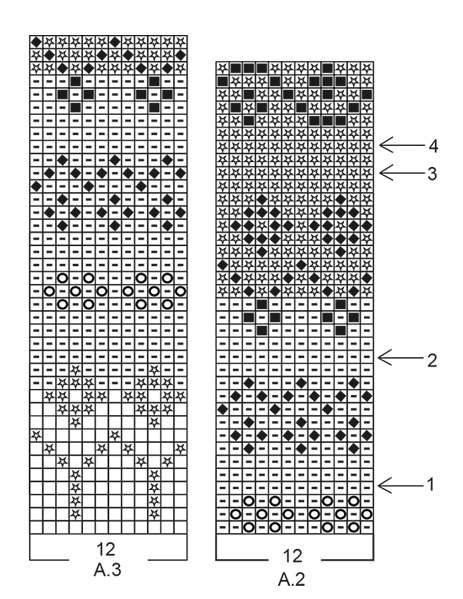
|
||||||||||||||||||||||||||||
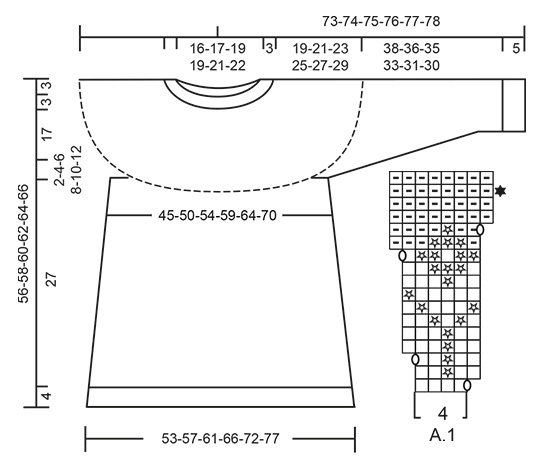
|
||||||||||||||||||||||||||||
|
Have you made this or any other of our designs? Tag your pictures in social media with #dropsdesign so we can see them! Do you need help with this pattern?You'll find tutorial videos, a Comments/Questions area and more by visiting the pattern on garnstudio.com. © 1982-2024 DROPS Design A/S. We reserve all rights. This document, including all its sub-sections, has copyrights. Read more about what you can do with our patterns at the bottom of each pattern on our site. |
||||||||||||||||||||||||||||































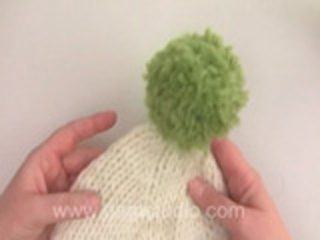




































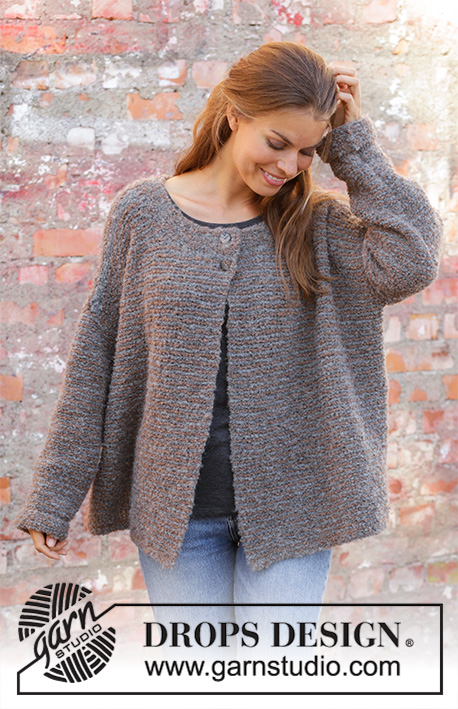



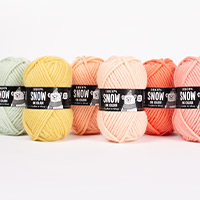

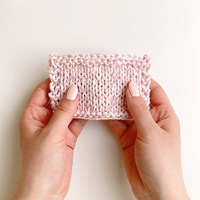
Comments / Questions (83)
I knit a Talvik hat 197-10. I CO 132 sts for ribbing. I'm knitting a adult L/XL size. The ribbing is pretty small about 30 inches.I used the yarn called for and size 2.5 circular needles. Can I unravel the ribbing , from the bottom of the design and add more sts and knit from Cast On to the beginning of the chart A.3
22.05.2021 - 05:00DROPS Design answered:
Dear Phyllis, if you knitted the ribbed part with the given gauge, it should fit you. However, if you need, you ccan take off the ribbed part and reknit, but the general experience says that it is pretty difficult to unravel the ribbing upside down, if you must take it off, you need to take out the last ribbed row, and frog from there. Please always check your gauge before starting to knit a piece. Happy Knitting!
23.05.2021 - 02:18Jag stickar Talvik och tycker det är konstigt att man skall öka så mycket från ärmhålen och ner. Har nu maskat av 360 m nertill i resår, tröjan blir väldigt vid.?.? Har jag gjort rätt??
27.04.2021 - 05:59DROPS Design answered:
Hej Lilian. Du ökar i sidorna på tröjan för att den ska få en A-form. De maskorna som ökas innan resåren är för att resåren inte ska strama jämfört med resten (och resåren stickas också med mindre stickor). Har du bara följt beskrivningen och har rätt stickfasthet så tror jag nog att du har gjort rätt. Mvh DROPS Design
27.04.2021 - 10:04Hej! Jag ska precis börja på rapport A1 jag har nu 108 maskor, (medium storlek) det står ” (=4 maskor) totalt 27 gånger runt på varvet, men as det att jag ska öka 108 maskor då? Och vart ökar man dem isf? Nästa fråga är på varvet med svart stjärna ökas det 24 maskor jämt fördelat kom ihåg övningstips = 240 maskor (inklusive de 4 maskorna som ökades i varje rapport A1 hoppas någon kan hjälpa mig hur jag ska läsa detta :)
25.04.2021 - 17:40DROPS Design answered:
Hej Angelica. Om du tittar på mönster/diagram A.1 längst ner i mönstret så ser du att det på varv 1 är ett omslag längst till höger. Du gör alltså ett omslag först och stickar sedan 4 maskor slätstickning i natur. Efter hela första varvet har du alltså ökat 27 maskor. Sedan ökar du enligt diagrammet på varv 3, 11 och 13. På näst sista varvet i diagrammet ökar du 24 maskor jämnt fördelat. När hela diagrammet är färdigt ska du ha 240 m på stickan. Mvh DROPS Design
27.04.2021 - 09:45Hei! Ser at fargene i mønsteret og fargene på illustrasjonsbildet ikke samsvarer. Det gjelder diagram A.2. ca. rett etter økning 2. På bildet er ser det ut til at det er strikket med natur, i diagrammet er det lys camel. Stemmer dette? Eller er det lyset til bildene som gjør noen rart her. Vil også anbefale dere å legge til fargenummer bak forklaringen nederst i oppskriften. Så slipper man å rulle opp for å finne ut hvilken farge man trenger, for så å rulle ned igjen.
16.04.2021 - 20:49DROPS Design answered:
Hei Inna. Bildet samsvarer med diagrammet, kan ikke se at det skal være brukt natur. Men dette kan avvik litt fra skjerm fra skjerm. mvh DROPS design
26.04.2021 - 14:58Hej! Jag stickar Talvik197/10modellz831 Har kommit till mönsterA1. Där har jag fastnat. Det ska ökas 4maskor i var rapport. Vad menas med rapport och när ska jag g öka? Vänligen Eva
21.02.2021 - 14:45Disculpad, ya lo he encontrado. COLOR BLANCO HUESO.
17.12.2020 - 23:24PATRON GORRO A3, fila 18 empezando por abajo, no encuentro la layenda del segundo punto, que es un círculo. ¿Me pueden explicar qué hay que hacer en ese segundo punto? Muchas gracias
17.12.2020 - 18:04DROPS Design answered:
Hola Monica! Me alegro que ya esté claro. Buen trabajo!
18.12.2020 - 11:14Diesen wunderschönen Pullover habe ich genau nach Anleitung, mit der angegebenen Alpakawolle gestrickt; obwohl ich schon einige Übung und sorgfältig gearbeitet habe, ist das Maschenbild leider sehr unregelmäßig. Ist es sinnvoll, den Pullover jetzt, nach Fertigstellung, nach Maßskizze feucht aufzuspannen, ändert sich dann das Maschenbild ?
20.11.2020 - 11:47DROPS Design answered:
Liebe Birgit, waschen und spannen nach Maßskizze kann immer helfen, eine schöneres Maschenbild bei dem farbigen Muster zu haben. Ihr Laden hat sicher noch weitere Tips dazu und kann Ihnen gerne mit Ihnen - auch telefonisch oder per E-Mail mitteilen. Viel Spaß beim stricken!
20.11.2020 - 14:29Enig med flere andre som har kommentert her. Olaug . Karin. Shiva. Må være feil i oppskriften. Blir altfor kort og altfor vid. Hilsen Laila
04.11.2020 - 20:01S, M, L etc are common to all your patterns but how do I know what they are in cms or ins? You have some lovely patterns but I do not want to knit if I end up with the wrong size.
01.11.2020 - 12:10DROPS Design answered:
Dear Veronica, behind the photo, you can change the language: in UK/English the measurements are in cm; in US/English the measurements are in inches. If you check the sketch at the bottom of the pattern for the measurements, they are always in cm (in both versions). Also, if you're in between 2 sizes, it's always recommended to knit the larger size. Happy knitting!
01.11.2020 - 16:25